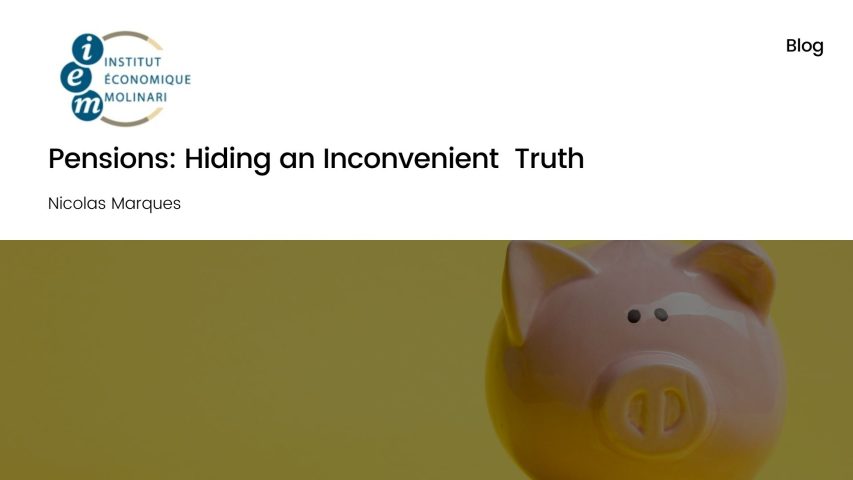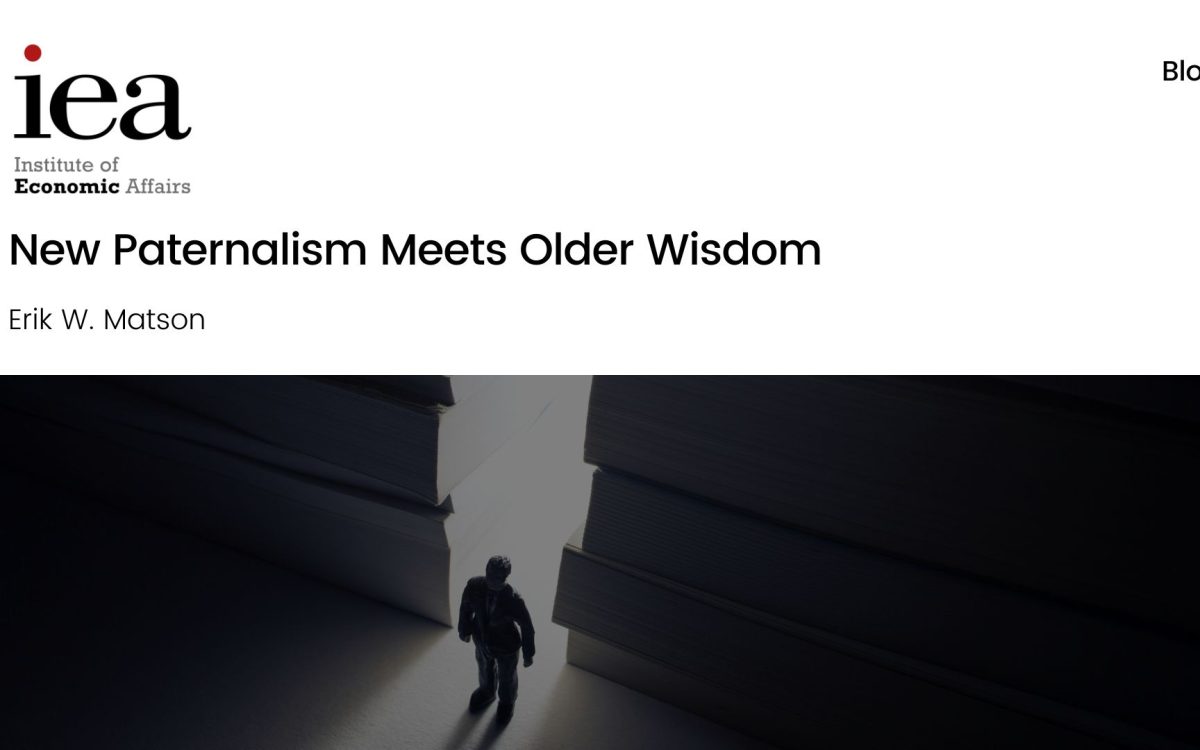Pensions: Hiding an Inconvenient Truth

Pensions: Hiding an Inconvenient Truth
Nicolas Marques // 28 March 2024
Lower growth rates, apprehensions about purchasing power, structural deficits in government spending, stubborn opposition to pension reforms – the French people are in a continuous state of anxiety about these issues, but they do not see the common thread connecting all of them: the ageing of a society that is ill-prepared for it. With the end of the baby boom, the general pension system in France has become problematic. In retrospect, the more the population ages, the more its impact is obscured.
In 1945, when the legislature generalised distribution to finance pensions, it did not hesitate to emphasise that this was more expensive than investing retirement savings in equity markets – otherwise known as ‘capitalisation’ – and that if we were not careful, the slow and progressive ageing of the population “would place an unbearable burden on the working population.”
In 1965, the fifth economic and social development plan called for increasing pension plan reserves.
In 1978, Prime Minister Raymond Barre emphasised that “we will not be able in this country to continue to design a system of social benefits based [only] on the distribution mechanism, and it will be necessary, as in other countries, adopt capitalisation mechanisms.”
But almost half a century after the end of the baby boom, France has ignored these warnings and calls to action.
In 1991, in a white paper on pensions, Prime Minister Michel Rocard identified all the dangers linked to the status quo (increase in taxes, reduction in purchasing power and savings, loss of competitiveness, unemployment, etc.) but ruled out any increase in the retirement age as well as the possibility of adopting market capitalisation.
In 1999, after years of having a wait-and-see attitude, the French government set up a Retirement Reserve Fund (Fonds de Réserve pour les Retraites, FRR) under the leadership of Lionel Jospin. But this fund was quickly and shamelessly plundered by different governments in search of easy money to absorb deficits, without understanding that the latter were the consequence of not anticipating the ageing of the population.
In 2003 and 2017, the governments of François Fillon and Emmanuel Macron relaunched retirement savings plans, but they attracted only 5.8% of retirement contributions in 2021.
In 2020, a poorly thought-out reform suggested closing the Civil Service Retirement Establishment (l’Établissement de Retraite de la Fonction Publique [ERAFP]) – the largest French pension fund, with Є38 billion in invested assets.
In 2023, a pension reform presented as fair proposed to close one of the best-funded pension plans in France, that of the Bank of France, with future additional costs for the taxpayer.
Denial of ageing
The French situation appears to be one of a perpetual denial of reality and a refusal to face obstacles. As Alfred Sauvy explained, “We are all more or less inclined not to see what displeases us.” And among the issues that we refuse to take on collectively, the ageing population occupies a key place.
The creator of the National Institute of Demographic Studies emphasised, “It generates an extraordinary refusal to see, even though it is the safest, oldest phenomenon (it is already two centuries old in France), the easiest to understand and measure, without the need to go to a fourth decimal place, the easiest to predict to a large extent.”
Why is ageing a problem in a country that relies almost exclusively on a pay-as-you-go pension system?
Because of the growing imbalance between the number of active contributors and that of retirees. With the counter-shock of the baby boom, Sauvy's famous proposition – “It is the children of today who will make the pensions of tomorrow” – has turned against us.
From 1950 to today, the fertility rate has fallen from 3 to 1.8 children per woman. Fewer children means fewer assets, fewer contributors, and fewer ways to finance pensions, as with all other public policies. Likewise, an ageing population corresponds with additional costs. Public spending on those over 60 years is three times higher than that for a person aged 25–59 years and 2.6 times higher than for an individual aged 24 years or younger, but nothing has been done to cushion this shock.
As Sauvy further emphasised,
"As soon as the birth rate or fertility level is perfectly known, why should there be a debate? Because the diagnosis we make leads to the prognosis. And even before the prognosis is established, the diagnosis already seems to suggest the prescription, an unpleasant prescription. Public opinion then prefers to refuse the diagnosis so as not to have to follow certain measures. It's a bit like a patient refusing a diagnosis because he's afraid of the remedy.
Since the end of the baby boom, collective reflection on ageing has made almost no progress."
The state has pretended to take up the issue of dependency of the elderly by creating a “fifth branch” of social security, but everyone knows this is a smokescreen.
The means to finance dependent elderly people at home and in nursing homes is lacking. There is a strong temptation to point fingers at private operators, but the fact is that underfinancing orchestrated by health insurance is a global problem.
Regarding pensions, the reports from the Retirement Orientation Council (Conseil d’Orientation des Retraites, COR) provide a watered-down assessment of the situation. They obscure almost all (94%) of the deficits associated with pensions (Є884 billion since 2002 or 2% of the gross domestic product [GDP] each year). They focus on the private sector and do not consider the remaining state funds from which civil servants' pensions and other special schemes (SNCF, RATP, etc.) benefit. In doing so, the COR helped to hide the situation.
Public finances are undermined by ageing
The structural deterioration of French public finances is a consequence of the ageing of the population. It is no coincidence that public accounts have never been in balance since 1974, the year that marked the end of the baby boom.
Previously, the working population and the economy were growing rapidly, and public accounts were most often in surplus. With the end of the baby boom, this situation came to an end, and deficits became systemic.
The fear of the legislature in 1945, that the low birth rate would lead to ageing of the population and “place an unbearable burden on the working population”, has come true. Payments made through the pay-as-you-go (PAYG) pension system has exploded, from 7% to 14% of the GDP. This explains 40% of the increase in public spending over half a century.
Instead of calling on financial markets to finance a part of pensions, the government has found it necessary to significantly increase compulsory contributions, which has harmed competitiveness, employment, and purchasing power, making the bill associated with ageing more expensive.
The state – which is by far the largest employer with 2.5 million agents – has been the most improvident operator in France. It promised attractive pensions financed by the budget. It does not have a pension fund that permits individuals to limit their commitments with points nor does it have a provision allowing them to self-finance part of the services without calling for taxpayers’ contribution. This historical error, which dates back to 1853 and Napoleon, was not corrected in 1945 as state officials did not wish for their pensions to be shifted to pay-as-you-go system instead of being fully funded by the state budget, and even less so in 2020, when the universalisation of various pension regimes was rejected.
Facing an accelerated reduction in the contributor–retiree ratio (to 0.9 compared with 1.3 in the private sector, due to the reduction in hiring following decentralisation), the state needs Є60 billion each year to fund the pensions promised to its staff, which represents a commitment of Є1,600 billion. Part of these pensions is financed by debt and the rest by a decrease in the quality–price ratio of public services.
As an illustration, the national education budget has been reduced by 28% to finance the payment of retirement pensions to former staff. That's how much money is missing that could give staff better pay and reduce the number of vacant positions.
Competitiveness and purchasing power are undermined by ageing
In the private sector, the ageing equation is just as insidious. The increase in employee retirement contributions – currently at 28% of gross salaries compared with 21% in 1980 – impairs competitiveness and purchasing power.
If supplementary pension schemes are sometimes well managed – as in the case of Agirc-Arrco, which has points and reserves – the refusal to shift all pensions to equity markets will result in the impoverishment of retirees. Their relative standard of living will be equivalent in 50 years to that of retirees in the 1980s. Quite a throwback! In 2070, the average standard of living of retirees may be 80% of the average standard of living of the entire population, while it is slightly above 100% today.
Capitalise collectively to restore public finances and purchasing power
We should therefore support at least a partial shift to collective capitalisation, as we had the opportunity to defend in a study published in 2019 in partnership with Contrepoints. To do this, two steps are essential.
The first consists of gradually providing for the pensions of public personnel from the FRR. This method has been used for more than a century by the Bank of France and the Senate. This makes it possible to capitalise on the value created by financial markets and limit the use of compulsory deductions to finance pensions. As an illustration, if the state had made provisions for its pensions like the Senate (the upper house of the French Parliament), it would have invested Є920 billion to finance the pensions of its staff. It would have saved on average Є29 billion per year over the last 15 years. Its deficit would have been 30% lower, at Є66 billion per year instead of Є95 billion. This approach – which is the most profitable investment that the state can make – is a priority if we want to restore public finances.
The second step is to encourage private-sector pension plans to invest in capital markets, based on the model of the Pharmacists' Old Age Insurance Fund (Caisse d’Assurance Vieillesse des Pharmaciens). From the 1960s, pharmacists have understood that a pay-as-you-go pension system would not make it possible to disburse generous pensions. They chose to finance their supplementary pensions in a hybrid way, relying on both pay-as-you-go (PAYG) and capitalisation, in line with the standard recommendation of economists. A part of the contributions is invested in financial markets (40% of the contributions, which, thanks to profit accumulation, finance 50% of the benefits), resulting in Є1 billion of gains generated by market capitalisation paid in addition to the Є4.7 billion in benefits distributed by their supplementary scheme over the last 30 years.
As you can see, solutions exist
Let us conclude with Sauvy’s warning:
"As long as the diagnosis is refused, there will be no question of finding the specific remedy. But the day it is clearly expressed, how many reproaches will rain down on the leaders, on the informants, on all the heads of the country, political, economic, academic, union, who will have done everything to hide this eminently curable evil. Let us spare no effort so that our eyes are finally opened."
This blog was originally published by Institut économique Molinari. To read it in French, please click here. Translated by Grace Fortune and Scott Bartram
EPICENTER publications and contributions from our member think tanks are designed to promote the discussion of economic issues and the role of markets in solving economic and social problems. As with all EPICENTER publications, the views expressed here are those of the author and not EPICENTER or its member think tanks (which have no corporate view).



